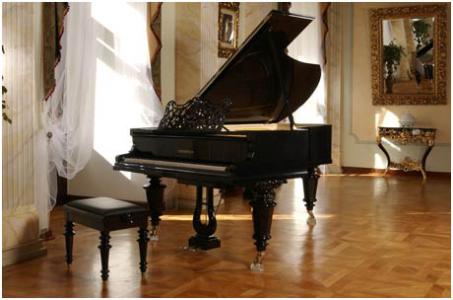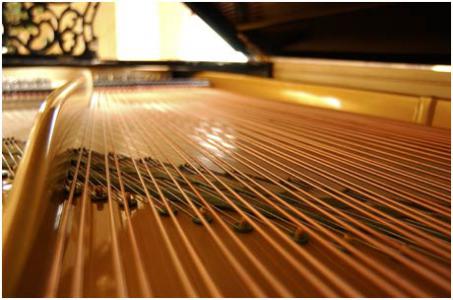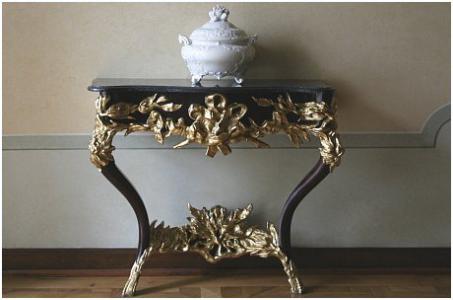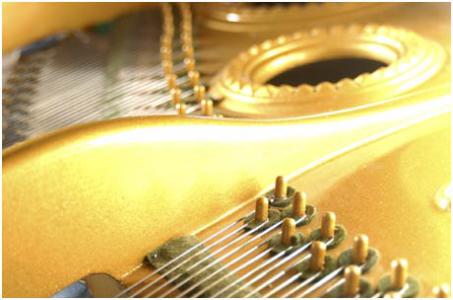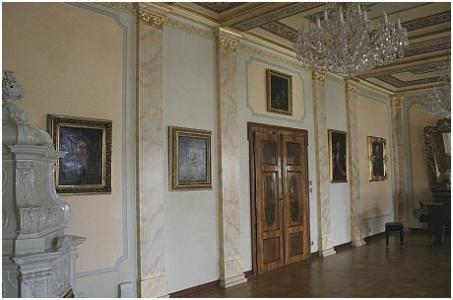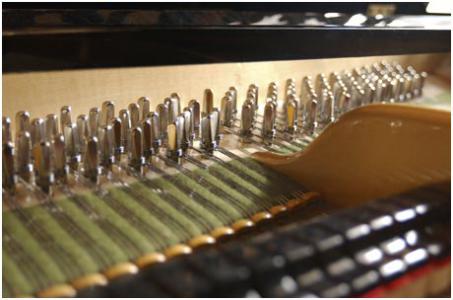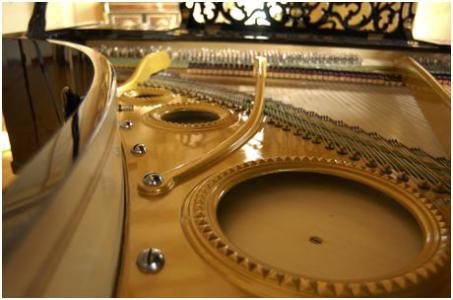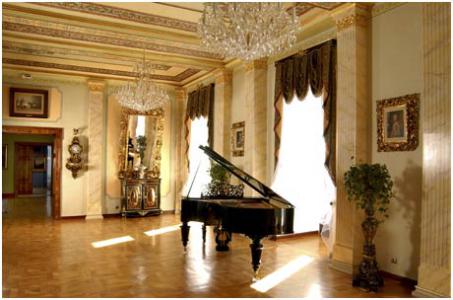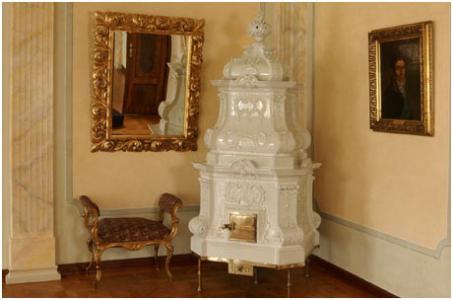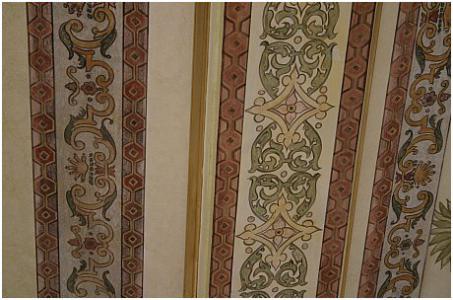The Music Room
The central section of the south wing on the castle’s first floor is taken up by the Music Room. It is the most splendid and elegant room in the castle, where the past, represented by its historic appearance, is linked to the present by the cultural events which take place here today.
The current appearance of the room is the result of interior renovation works undertaken in 2002. The 19th century architectural features of the Music Room, preserved in a classical style, have been enriched by many-hued historic polychrome decorations of the plafond and with furniture and paintings of mostly 18th century design and style. The panelled walls are divided by pilasters with Corinthian chapiters, which support the ceiling. The space between the pilasters on the northern wall is dedicated to a gallery of 18th century portraits, among which the most important is the portrait of King Augustus III painted in 1746 by Dominikus van der Smissen. There are windows on the southern wall, which provide the main source of light for the room. The wall space between the windows is given over to the paintings by Joseph-Siffred Duplessis from the second half of the 18th century. On the western and eastern wall there are gilt-framed crystal mirrors with neo-Baroque frames of lush acanthus leaves. They hang opposite each other, two on each wall, visually enlarging the room. This also simultaneously refers back to the 17th century tradition of mirror galleries. Between the mirrors, on a central alignment with the longest part of the room in the style of an enfilade, doors lead off to connecting rooms. The entrance to the Early Art Room is in the west wall, while on the eastern side the doors lead to the Biedermeier Room. This side of the Music Room is additionally furnished with antique chests of drawers which, together with a cartel clock, provide a unique example of the artistry of Ch. A. Boulle, a court cabinet maker of king Louis XIV. Of note is a Rococo-style stove placed in the north-western corner of the room. The musical aspect of the room is accentuated by a parlour grand piano from 1856, as well as such paintings as Teatime by the Hapsichord (the second half of the 18th century) by Duncan MacKellar or a 1776 portrait of the composer Christoph Willbald Gluck by J.-S. Duplessis. The four crystal chandeliers add to the elegance and stateliness of the Music Room and, shimmering with various hues, they contribute to the incredible atmosphere of the room.
